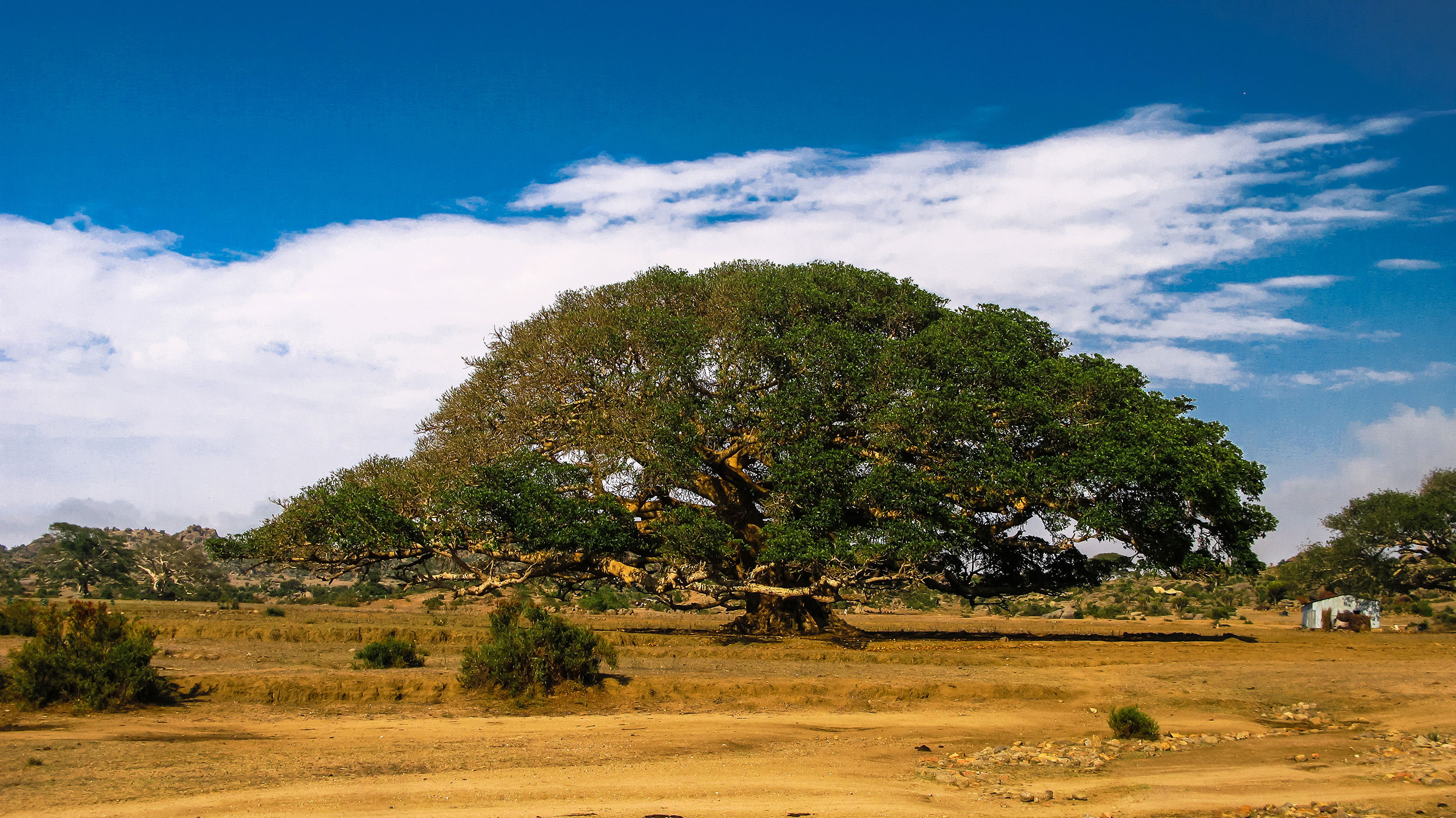Eritrea – Africa’s hidden gem

Eritrea became an independent country in April 1993, two years after the end of the 30 year war for independence from Ethiopia. While the country itself may be young, the land is as old as time, and people who populate it can tell you of its rich history.
Location:
Eritrea is located in the horn of Africa, with over one thousand kilometres of the Red Sea coastline and Sudan, Djibouti and Ethiopia bordering it. Also included as part of the country are the over 350 islands of the Dahlak Archipelago.
Climate:
The climate of Eritrea varies, from moderate temperate climate in the highlands to hot coastal plains in the lowland regions. The country can be classified into three major climatic regions: the highlands, the coastal area of the Red Sea and the western lowlands. All areas are cooler during the winter months and warmer during the summer.
People and Culture:
The people of Eritrea are a diverse group who live in harmony with one another. They belong to one of nine population groups, including nomads, pastoralists, fishermen and farmers. Each of the groups have their own unique lifestyles and cultures depending on what part of the country they live in. Their styles of dress, decoration and art also all reflect this. Known for their politeness, Eritreans greet each other and foreigners politely and courteously with a hand shake or kisses on the cheek or bumping of the shoulders. The offering of tea or coffee is customary, while being asked to participate in a coffee ceremony is a special invitation. Smoking is not a popular activity, and shoes are often taken off as they enter churches and mosques.
Major Towns:
The largest of the cities in Eritrea is the capital city of Asmara. The city boasts a population of 400,000 and sits on a plateau 2,324m above sea level. It enjoys a pleasant climate all year round. Here you will find picturesque palm-lined boulevards and some of the world’s finest Art Deco architecture. You will also find a wide-range of side-walk cafes and excellent restaurants.
Massawa is one of Eritrea’s two ports, and is considered to be ‘the Pearl of the Red Sea.’ The ancient city features coral buildings and arcades that reflect the Turkish influence. Massawa features many coastal activities, and is host to many sun and fun seekers year round.
For those seeking a more leisurely vacation, the capital of the Anseba Zone, Keren, may be for you. This city lies 91km north of Asmara, and sits amongst seven hills at 1,377m above seas level. While it is considered a more relaxing alternative to the capital city, it still does feature bustling activity during its market days.
Major Festivals:
There are several holidays throughout the year, but the ones you may be most interested in include: Fenkel Celebration from February 10-13th, Liberation Day on May 24th, Festival Eritrea in August and September, and Start of the Armed Struggle on September 1st.
Natural Tourist Attractions:
When visiting Eritrea, there are several sites you won’t want to miss. First up is the Great Rift Valley. While this natural attraction may not be unique to Eritrea, it does run through it. You can spot many beautifully preserved and eye-catching volcanic structures throughout the valley, including cones, calderas, flows and explosion craters. Another natural wonders you may want to visit is the Danakil Depression, which is one of the hottest places on Earth. Often compared to a lunar landscape, the region is a vast expanse of hot and dry desert skirted by mountains. It is here you will find some of the best natural Hot Springs in the world, including spas at Akwaar and Mai-Wui. The Eritrean islands are comprised of more than 250 islands, and they remain one of the last great unspoiled destinations on Earth. The crystal clear waters make it a ‘scuba-divers’ paradise. You will also want to make sure to take a look at the Semenawi Bahri escarpment, otherwise known as ‘The Green Belt’. The area is permanently green, and is covered with lush forests and plantations. The area is perfect for wildlife viewing as well, including birds, Baboons, Vervet Monkeys, Bush back, Leopards, Warthogs and more. And finally, it goes without saying, that you will want to visit the mountains of the area during your visit. About nine percent of Eritrea is covered in mountains, from small to medium elevations.
Historical Tourist Attractions:
You’ll find many significant historical tourist attractions throughout Eritrea. Among them is Qohaito, which is one of Eritrea’s largest and most famous archaeological sites. The area contains many large mounds and mound complexes with substantial features and rubbles, monumental structures multiple stone tumuli and an ancient dam and reservoir. It’s not just one site you are visiting when you explore the area, but many single sites and clusters of sites spread over the entire plateau. The ancient site of Metera has several must-see attractions, such as excavated churches and buildings, and the Metera Stela. The Keskese near the mountain peak Amba Tarika is well known for its partially buried monolithic pillars or obelisks, while the ruins of Adulis near the Red Sea coast showcases how the area was once one of the most important trading centers of the classical world. The largest island of Eritrea, Dahlak Kebir, is home to an ancient necropolis, graveyard and water cisterns.To some, it is considered one of the wonders of the ancient world. Eritrea is also home to several ancient monasteries, such as Debre Sina, Debre Bizen, Tsaeda Emba, Debre Libanos, as well as historically significant mosques.
